Table of contents
Baking powder is a leavening agent and provides volume and fluffiness to cakes, tarts and other baked goods. Unlike yeast , the reaction with baking powder takes place immediately and the dough must not rest for too long.
Use in the kitchen:
What is baking powder good for? Baking powder is particularly important for the success of cakes, tarts, cookies and other baked goods. It is added when the dough is practically ready, so that you only have to stir it briefly. Then you should put the dough in the oven immediately or store it in the fridge. The dough reacts to the heat in the oven, waffle iron or deep fryer and the moisture and rises.
The rising process of baking powder is similar to that of baking yeast or sourdough. However, the preparation time is much shorter and the taste and consistency are also different.
How much baking powder do I need to use? As a rule of thumb, the baking powder to flour ratio is around 1:30, i.e. one part baking powder to 30 parts flour. One sachet contains around 17 g, which is enough for around 500 g of flour.
Tips: A pinch of baking powder in the cooking water will help keep the green color of green beans when cooking. If the salad dressing is a bit too acidic, a pinch of baking powder will make it milder again.
Raising agents and their use:
What is the difference between baking soda and baking powder? Baking powder consists of a CO 2 source ( sodium hydrogen carbonate = baking soda ), an acidifier (tartaric acid, disodium dihydrogen diphosphate E 450a or monocalcium orthophosphate E 341a as acid carriers) and a release agent. The release agent is starch (e.g. corn starch), which prevents the CO 2 source from reacting too early. In combination with moisture and heat, gaseous carbon dioxide is produced (released): small gas bubbles form that loosen the dough and increase its volume. If you want to bake with baking soda instead of baking powder, you will also need an acidifier, such as vinegar or lemon.
Baking powder is particularly suitable for quickly mixed batters. Flat shortcrust pastries (cake bases, biscuits) rarely contain baking powder. In yeast doughs, the yeast itself takes on the role of the raising agent. For flat long-lasting baked goods, you can also use pure ammonium hydrogen carbonate. Potassium carbonate (potash), ammonium bicarbonate (ammonium bicarbonate, ABC raising agent, E 503) or a mixture of ammonium hydrogen carbonate and ammonium carbamate (1:1) is also suitable for gingerbread or honey cakes. The ammonia contained in them decomposes at temperatures of 60 °C. Baking with ammonium bicarbonate, however, promotes the formation of acrylamide (Maillard reaction). 1
Cream of tartar baking powder has the same effect as "normal" baking powder, except that the acid is phosphate-free and comes from natural cream of tartar (potassium hydrogen tartrate), e.g. from sparkling wine production.
When it comes to baking yeast ( Saccharomyces cerevisiae ), a distinction is made between fresh baking yeast (pressed yeast, baker's yeast) andbaking yeast as active dry yeast . Fresh yeast has a stronger leavening power, but requires longer fermentation times and several rest phases. Dry yeast also works without stirring the dough. In addition to being used as a natural raising agent, yeast fungi are also used as a food supplement or seasoning because of their high content of glutamic acid and B vitamins - as is the case with yeast flakes (noble yeast ). However, as noble yeast is an inactive form of yeast, it can no longer be used for baking. These fungi can also be found in highly concentrated form and as a spread in the form of yeast-based spice pastes - a very intense-tasting yeast extract made from lysed yeast cells (produced by destroying cell walls).
Brewer's yeast , originally used in beer production, strikes a balance between a raising agent, a dietary supplement, a cosmetic product and an intestinal flora cleanser - depending on the processing (active, inactivated, etc.) in which it is consumed.
In addition to yeast, sourdough also contains lactic acid bacteria; the fermentation times are a little longer and the taste (including that of the end product) is significantly more sour. Baking ferment is also common among organic bakers; this sourdough consists of wheat, peas and honey and is available as granules. 2
Vegan recipe for pizza dough with baking powder:
Ingredients: 400 g wheat flour , 250 ml plant milk (e.g. oat milk ), 3 tbsp oil ( rapeseed oil ), 1 tsp sea salt , 1 packet of baking powder.
Preparation: This pizza dough does not need to rest. Put all the ingredients in a bowl and use the dough hook to knead it into a smooth dough. Roll it out on a work surface, place it on a baking tray lined with baking paper and top it as desired.
Vegan recipe for buckwheat chia bread:
Ingredients: 40 g chia seeds , 240 ml + 160 ml water , 300 g ground buckwheat (buckwheat flour), 3 tsp baking powder, 1 1/2 tsp salt , 60 ml rapeseed oil, 35 g peeled sunflower seeds as topping.
Preparation: Preheat the oven to 180 °C top and bottom heat. Mix the chia seeds with the water and leave to soak for about 20 minutes. Mix the buckwheat flour, baking powder and salt in a mixing bowl and add the remaining 160 ml of water, oil and the chia seed mixture. Now quickly mix everything into a dough. Grease the baking tin (20 cm, loaf tin) well or line it with baking paper and pour the bread mixture into the tin, smooth it out evenly and sprinkle the sunflower seeds on top. Now bake the bread for 1 hour and 10 minutes. Then remove it from the oven immediately and allow it to cool completely before cutting and enjoying.
Vegan recipes with baking powder can be found under the note: " Recipes that have the most of this ingredient ".
| Not only vegans or vegetarians should read this: Vegans often eat unhealthily. Avoidable nutritional mistakes . |
Shopping - where to buy?
Baking powder is available at all supermarket chains such as Coop , Migros , Denner , Volg , Spar , Aldi , Lidl , Rewe , Edeka , Hofer etc. Often several portion bags (paper envelopes) of 17 g each are packaged and sealed in a protective atmosphere.
To reduce the intake of too much phosphate in the diet, you can use cream of tartar baking powder as an alternative (more on this below). Baking powder from organic manufacturers often contains cream of tartar as an acidifier and tapioca starch instead of corn, rice or wheat starch as an anti-caking agent.
Homemade:
Phosphate-free baking powder is very easy to make yourself. You need 1 teaspoon of baking soda, 2 teaspoons of ascorbic acid (vitamin C, as an acidifier) and 2 teaspoons of corn starch (as a separating agent). Mix the ingredients well together; it is enough for about 500 g of flour. Unfortunately, this variant is not easy to make in advance, as the ingredients are very reactive and clump quickly.
Alternatively, you can make baking powder from 60 g of baking soda, 50 g of citric acid, 30 g of corn starch (and, if you have it, 15 g of silicon or silica powder). Once the ingredients are well mixed, pour them into a container WITHOUT METAL (not even the lid) as the citric acid will react. For around 500 g of flour, you will need around 16 g of this baking powder.
It is even easier to use pure baking soda in combination with an acid (e.g. lemon juice , vinegar ) as a baking powder substitute. As a guideline: for 500 g of flour you need 1 teaspoon of baking soda and 5 tablespoons of vinegar or lemon juice. Baking soda neutralizes the acid contained. If you want a sour taste, you can simply increase the amount of acid a little. The reaction takes place very quickly, which is why you should definitely mix the baking soda well with the flour beforehand - and then mix everything with the lemon juice or vinegar and immediately put it in the oven.
Storage:
It is particularly important to store paper bags or opened packages in a dry place, as moisture can activate the baking powder and cause it to lose its leavening power. Unopened, it will last for at least a year.
Ingredients - nutritional value - calories:
Baking powder has an energy content of approx. 175 kcal/100g. The majority of the main nutrients come from carbohydrates (38%) and proteins (5.2%), and does not contain any fat. 3
The sodium content in baking powder is very high at 11,800 mg/100g. Phosphorus is also very well represented at 8,430 mg/100g. The reason for this is the acidifying agents disodium dihydrogen diphosphate (E 450a) or monocalcium orthophosphate (E 341a) contained in normal baking powder. The same applies to calcium with a content of 1,130 mg/100g. 3
Occasionally you will also find vanillin or ethyl vanillin as a flavoring in baking powder.
In addition to cream of tartar (potassium hydrogen tartrate), phosphate-free baking powders also contain glucono-delta-lactone (GdL) or calcium citrate as acid carriers.
You can find all the ingredients, the coverage of the daily requirement and comparison values with other ingredients in our nutrient tables. In the article Nutrients explained you will get a detailed insight into the topic.
Dangers - intolerances - side effects:
Too much phosphate in food is not only dangerous for people with kidney disease, it also poses a health risk for healthy people over a long period of time. Phosphates change the inner walls of blood vessels, which promotes heart attacks and strokes. The risk of osteoporosis increases because large amounts of phosphate dissolve calcium from the bones. 4 Even in young, healthy people, too much intake leads to rising blood pressure and an increased pulse rate. 5
Phosphates are not only found in baking powder. The food industry definitely benefits from its use as a preservative, acidifier, acidity regulator, release agent and emulsifier. Meat and sausage products, canned fish, baked goods, dairy products, processed cheese, drinks, pudding powder and baby food in particular contain this food additive. Unfortunately, the labelling is often inadequate and confusing for the consumer. E numbers such as E 338 - E 341, E 343, E 350 - E 352, E 1410, E 1412 - E 1414 and E 1442 contain phosphates. 4 Watch one of our embedded videos here with the title Processed cheese: The underestimated phosphate danger .
In addition to phosphates, aluminum-containing acids (sodium aluminum sulfate, aluminum sodium sulfate, sodium alum, E 521) can also be used in baking powder. This food additive should be avoided at all costs, as this salt can cause eczema on the skin, eyes and mucous membranes. 6
Gluten-containing starch products such as wheat starch can also be included as separating agents. People with gluten intolerance, gluten sensitivity or celiac disease need to be particularly well informed about this.
Chemical additives in baking powder (eg phosphates) can trigger neurodermatitis, allergic asthma or food allergies in some people. In the case of histamine intolerance, baking powder can also contribute to an intolerance reaction. In these cases, you should avoid conventional baking powder and try to replace it with natural alternatives.
The baking agent sodium hydrogen carbonate (NaHCO 3 ) is actually a natural mineral (nahcolite) that occurs in oil shale and can be obtained as a by-product of oil production. 7 Chemical production is much more widespread, however. In Europe, for example, baking soda is produced from ordinary table salt (NaCl). In a chemical process, the chlorine is exchanged for carbonate (CO 3 ). The Solvay process or ammonia-soda process actually describes the production of soda (sodium carbonate Na 2 CO 3 ). However, baking soda is also produced in a preliminary stage. The disadvantages of this process are that it uses a lot of water and for 1 kg of soda, 1 kg of calcium chloride (CaCl 2 ) is produced as an unusable "by-product". This is usually disposed of via the sewage system, so it ends up in rivers and seas. Special settling basins (lime ponds) are intended to reduce water pollution. However, it should be noted that 1 million tons of soda are produced annually, which also produces about 1 million tons of calcium chloride! 8
Occurrence - Origin:
Eben Norton Horsford , a student of Justus von Liebig , invented baking powder in the middle of the 19th century. It was sold at the time by the German pharmacist Ludwig Clamor Marquart . Horsford founded the Rumford Chemical Works with George Francis Wilson in 1854 and they produced baking powder in the USA under the name "yeast powder". Horsford continued to develop and improve it and had it patented as "baking powder". August Oetker began selling baking powder in small portions in Germany in 1891 and bottled it as baking powder in 1893. The process, patented in 1903, still has numerous applications.
Danger of confusion:
Baking powder is not pure sodium bicarbonate (NaHCO 3 )! But strictly speaking, sodium bicarbonate is also a type of baking powder or a raising agent. Both raising agents look very similar, but, as described, baking powder also contains an acid and a release agent in addition to the sodium bicarbonate.
It is also quite common to confuse baking soda with soda, as some people use these terms interchangeably, which leads to confusion. Let us refer to soda as washing soda, pure, anhydrous soda or calcined soda, i.e. sodium carbonate (disodium carbonate, Na 2 CO 3 ). In English it is called "washing soda" and baking soda is called "baking soda". Soda is also used in food, but mainly as a bleaching and detergent agent; it is much more basic and the reactions are much stronger than with baking soda. If washing soda comes into contact with acids (e.g. citric acid), a violent reaction occurs with heavy foam formation.
If you want to make soda from baking soda, you can spread the baking soda on a baking tray and "bake" it in the oven for about 30 minutes at 200 °C. This process removes water and carbon dioxide from the baking soda and creates washing soda.
General information:
Sodium carbonates are labelled E 500 as a food additive and are used as raising agents and acidity regulators.
Wikipedia formulates the chemical reactions as follows: 7
- Thermal decomposition : 2NaHCO 3 > Na 2 CO 3 + CO 2 +H 2 O
This reaction takes place at temperatures above 50 °C. When heated, baking soda decomposes into soda, carbon dioxide and water.
- Reaction with acid : NaHCO 3 + HCl > NaCl + CO 2 + 2H 2 O
Sodium bicarbonate and hydrochloric acid (hydrochloric acid) react to form sodium chloride, carbon dioxide and water.
Alternative names:
In English, baking powder is known as baking powder. Sometimes you also find baking soda, although this usually stands for sodium bicarbonate.
Keywords for use:
In addition to its use as a raising agent, baking powder can also be used in many different ways in the home: 9
You can easily neutralize odors in the refrigerator, shoes, or cat litter box with baking powder (1/2 pack) and baking soda (1 teaspoon). Simply sprinkle the mixture on a plate or directly in the problem areas and it will bind the unpleasant odors.
For burnt pots, you can also add the same amount (as mentioned above) to the pot with a little water. After an hour of exposure (or overnight), you can simply remove the dirt with a brush. If you mix baking powder with a little water, you can also use it as a scouring paste and easily remove dirt from grill grates, ovens, tile joints, etc.
Half a packet of baking powder mixed with water will also remove tea or coffee residue from cups, thermos flasks or other containers. If you leave it overnight, the residue can be easily cleaned away in the morning.
Baking powder, baking soda or citric acid can also be used when washing white laundry. The baking soda bleaches the laundry slightly and works similarly to a fabric softener. Shirt collars or stains are best treated directly with baking powder and water and then washed as usual.
Baking soda or baking powder also works against unwanted ants and, dissolved in a spray bottle, against aphids.
A packet of baking soda helps with clogged drains. Add half a cup of vinegar to the powder and rinse the drain with warm water after a few minutes.
Literature - Sources:

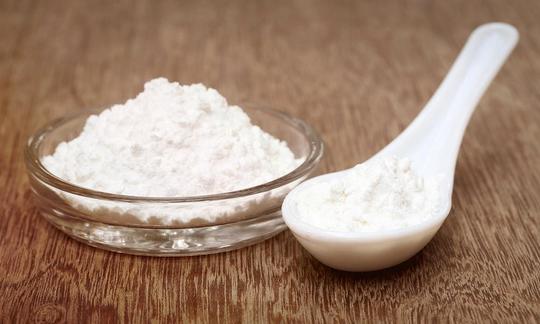

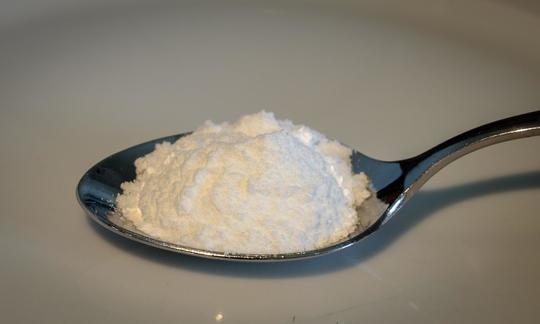

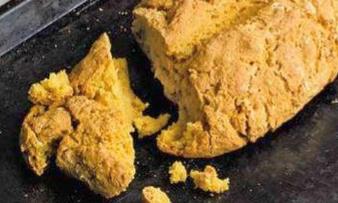

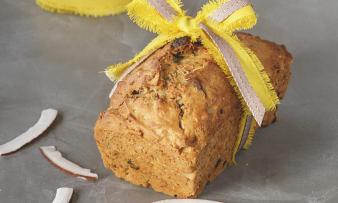

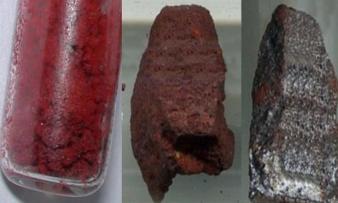



Comments